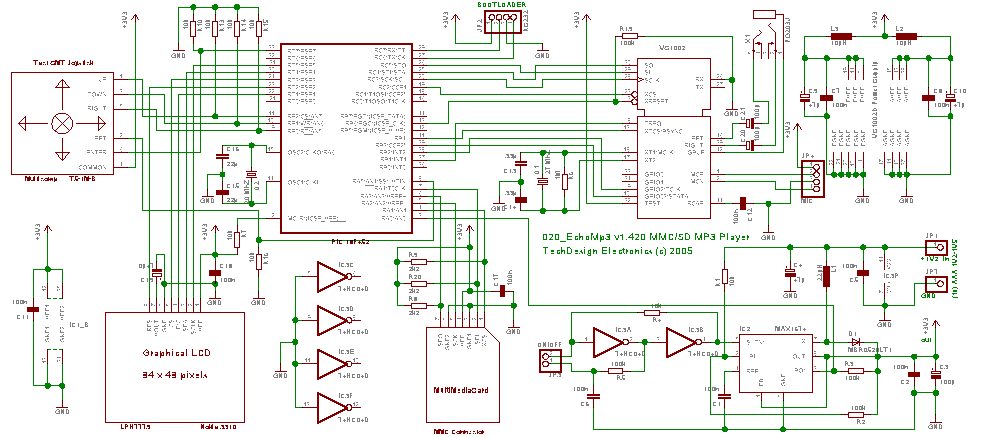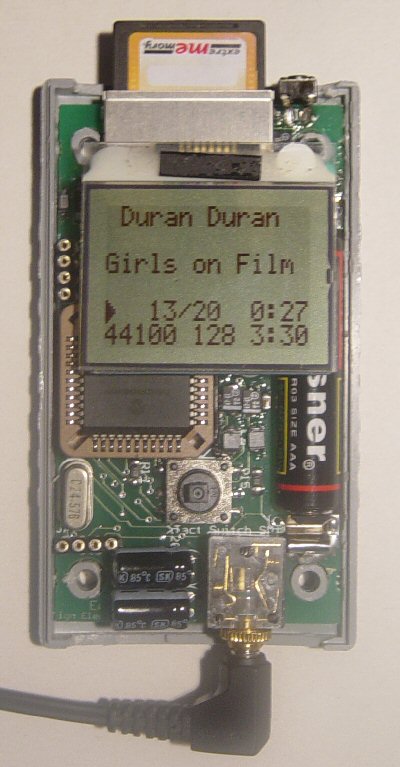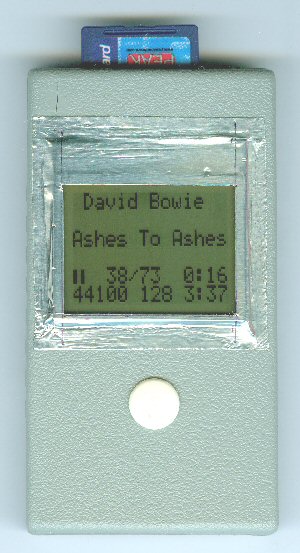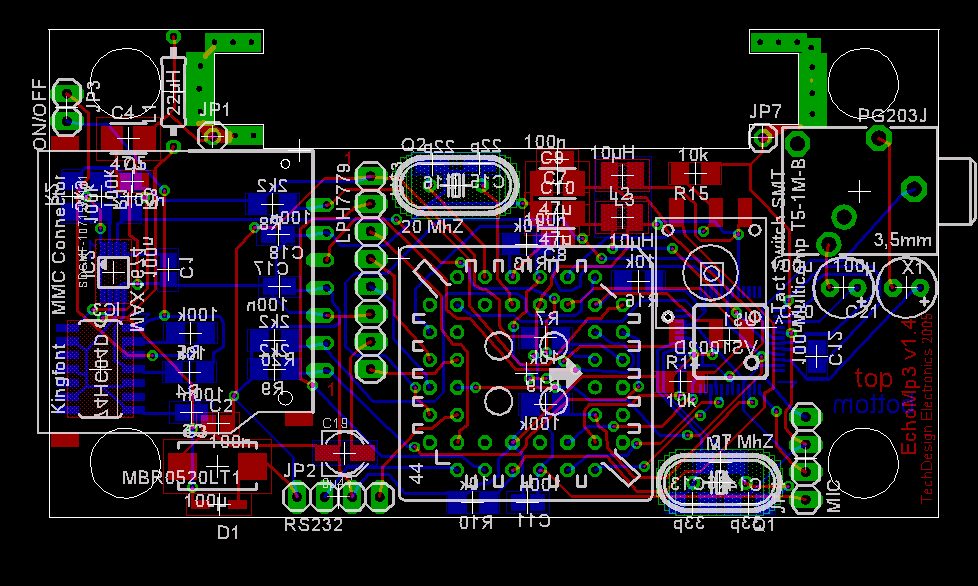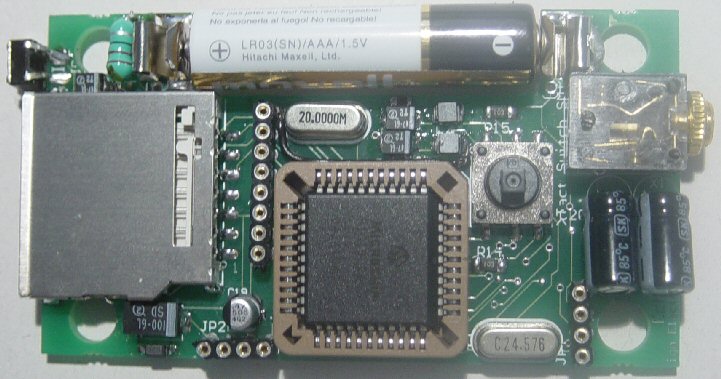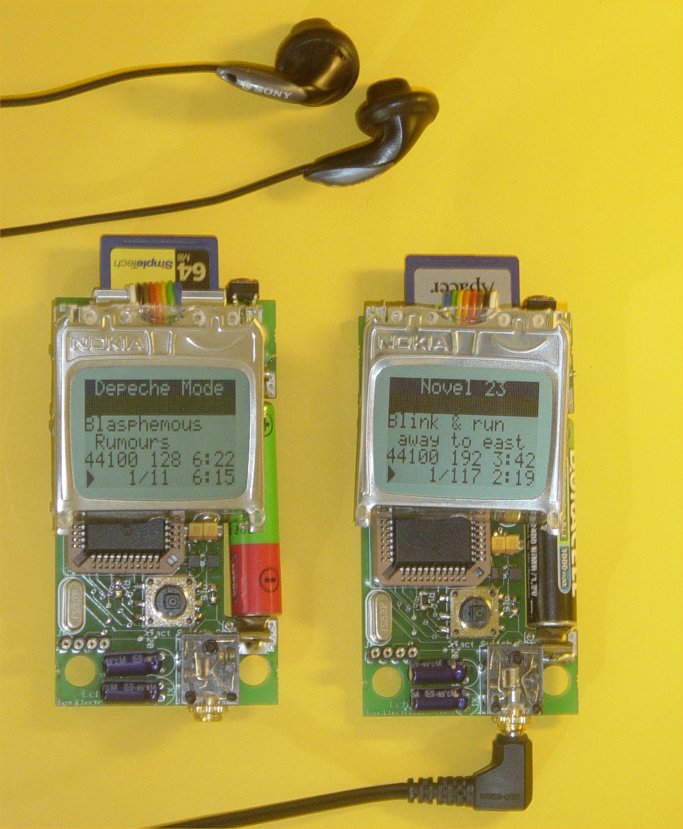
The EchoMp3 is a small DIY* MP3 player. It's cheap and of excellent quality.
- 64, 128, 256, 512MB and 1, 2, 4 GB MMC and SD(HC) cards used as storage.
- FAT (FAT16) and FAT32 supported.
- Low power operation with a single AAA (HR03) 1V2 Ni-Mh battery.
- Runs on a 18LF452 or 18LF458 at 20 MhZ.
- Up to 256 kBps bitrate at 44,1 kHz supported. VBR may peak at 320 kBps.
- ID3 v2.3 tags supported.
- Full user control (volume, track, pause, skip, directory) with a 5-way micro joystick.
- Real time display of bitrate, sampling rate, elapsed time, songnumber, ...
- LCD contrast adjustable by user.
- Directory scrolling and file fragmentation support. Directory depth up to 10 accepted.
- Shuffle (random play) and extended character set enabled.
- SDHC (High Capacity) Cards now supported. Here are some compatible cards.
- New: Serial interface control.
- High quality stereo DAC with a S/N ratio of typ. 87dB.
- THD of only 0.1% typ.
- On/Off pushbutton.
-
Software is 100% upgradeable
through an RS232 bootloader connector.
- Voice Recording in PCM-format with same hardware is now possible! Look here for the source code.
- All parts are available in our online shop. KIT versions available.
- KIT step-by-step construction guide.
* Do It Yourself.
Schematic & pcb (Eagle 4.11e), hex file available. Player Software Updated on November 24, 2009.
Discontinued as of Feb.2011. Check out our new EchoMp3 v3.1 instead.
